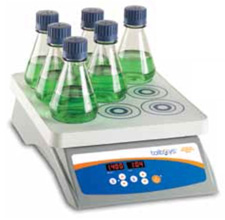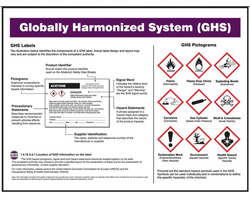| The Home page of ILPI's Safety Data Sheet (SDS) Resource, the leader in SDS information since 1995! | |
| The history and philosophy behind this resource. | |
| A curated collection of books and reference materials concerning Safety Data Sheets and closely related topics. | |
| Paste your plain text SDS into the SDS-Demystifier, and it will be converted into a hypertext-enriched document with links to detailed explanations of each key term. | |
| An extensive list of frequently asked questions about Safety Data Sheets including regulations, content, compliance, and more. | |
| A humorous take on Safety Data Sheet jargon. Fill in the blanks on our entry form to generate a personalized Unsafety Data Sheet to share with your coworkers. | |
| Since 1995, we've maintained this massive curated list of the best places to find Safety Data Sheets on the Internet. | |
| Way more than a glossary, this hypertext-enhanced resource covers hundreds of SDS-related terms and expert knowledge. Each entry includes both the SDS relevance and links to additional authoritative resources. | |
| Archived results of Safety Data Sheet related polls taken by some of our millions of site visitors | |
| You are here! The OSHA regulations behind SDS regulations, including the inspection guidelines and over 400 official interpretations letters under the Hazard Communication Standard | |
| Commercial suppliers of SDS authoring and management software as well as cloud compliance services. | |
| Commercial companies that will create SDS's for your specific needs as well as SDS translation companies. |

Safety signs, banners, and scoreboards? Get yours at Safety Emporium!
| Title: 04/04/2005 - Requirement to disclose all chemicals having scientific evidence that they pose a health risk regardless of concentrations present in the product on the MSDS. | |
| Record Type: Interpretation | Standard Number: 1910.1200; 1910.1200(g)(2)(i)(C)(2) |
OSHA requirements are set by statute, standards and regulations. Our interpretation letters explain these requirements and how they apply to particular circumstances, but they cannot create additional employer obligations. This letter constitutes OSHA's interpretation of the requirements discussed. Note that our enforcement guidance may be affected by changes to OSHA rules. Also, from time to time we update our guidance in response to new information. To keep apprised of such developments, you can consult OSHA's website at https://www.osha.gov
April 4, 2005
Ms. Margarethe Jaroszewski, Manager
Regulatory Consulting and Applied Toxicology
Ariel Research Corp. Europe ApS
Lyngbyvej 20, 3
DK 2100 Copenhagen, Denmark
Dear Ms. Jaroszewski:

Safety Emporium has all kinds of lab equipment such as stirring hot plates.
Thank you for your January 27, 2005, letter to the Occupational Safety and Health Administration's (OSHA's), Directorate of Enforcement Programs (DEP). Please be aware that this response may not be applicable to any statement or question not delineated within your original correspondence. You had specific questions regarding OSHA's Hazard Communication Standard (HCS), 29 CFR 1910.1200, as it applies to material safety data sheets (MSDSs) for mixtures. Your statement and question are paraphrased below, followed by our response.
Statement: We are in the process of developing Material Safety Data Sheets (MSDSs) for our European clients who are exporting their products to the United States. During the process several questions arose regarding 29 CFR 1910.1200(g)(2)(i)(C)(2) [This reference is outdated. In the current regulation HCS 2012 this determination is made using Appendix A]; which states " The chemical and common names(s)...which comprise less than 1% (0.1% for carcinogens) of the mixture, if there is evidence that the ingredient(s) could be released from the mixture in concentrations which would exceed an established OSHA Permissible Exposure Limit or ACGIH Threshold Limit Value, or could present a health risk to employees;". Our clients are faced with a situation where many of their cosmetic products used by beauticians and hairdressers contain small amounts (below 0.1%) of fragrance or preservatives that are recognized skin sensitizers.
Question: What is the existing practice for lower limits of disclosure, and what are the requirements for our clients to be in compliance?
Response: To be in compliance with the HCS, your clients would have to report the chemical and common names of all components on the MSDSs which pose a health risk to employees. Appendix A of the HCS lists health effects of chemicals which are considered health hazards under the standard. Chemicals which are sensitizers are included in Appendix A. As you point out, this has to be done regardless of the percentage amounts of the chemical present in their products provided that there is scientific evidence that the particular chemical poses a health risk to employees. Chemicals that are sensitizers may be present in very low concentrations in mixtures, yet still present a health risk to exposed workers. As such, this information must be noted on the MSDS. Employees who are end-users of such products have a right to know what hazards they are being exposed to.

Ensure your workers are trained with safety posters and more from Safety Emporium.
We thank you for your interest in occupational safety and health. We hope you find this information helpful. OSHA requirements are set by statute, standards, and regulations. Our interpretation letters explain these requirements and how they apply to particular circumstances, but they cannot create additional employer obligations. This letter constitutes OSHA's interpretation of the requirements discussed. Note that our enforcement guidance may be affected by changes to OSHA rules. Also, from time to time we update our guidance in response to new information. To keep apprised of such developments, you can consult the website at https://www.osha.gov. If you have any further questions, please feel free to contact the Office of Health Enforcement at (202) 693-2190.
Sincerely,
Richard E. Fairfax, Director
Directorate of Enforcement Programs
The original official public domain version of this document is available from OSHA at https://www.osha.gov/laws-regs/standardinterpretations/2005-04-04.